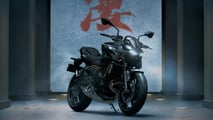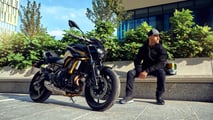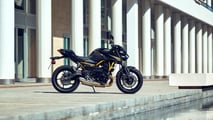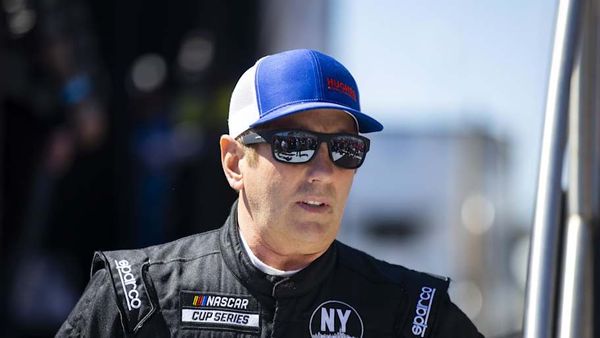I’ve always been a sucker for middleweight nakeds. They hit that sweet spot between approachability and excitement with enough power to keep you grinning, but never so much that you’re scared to open the throttle. Over the years I’ve gone through three Yamaha MT-07s, a Triumph Street Triple, a CFMoto 650NK, and even a Kawasaki Ninja 650.
Out of all of them, the Ninja 650 was the smoothest and most refined. Some riders call it clinical, maybe even soulless, but I don’t see it that way. What Kawasaki did was focus on the fundamentals: linear throttle response, predictable power delivery, and bulletproof reliability.
That same philosophy lives on in the new Kawasaki Z650 S. This is the next evolution of a platform that’s earned its reputation as one of the most balanced middleweight bikes around. Rather than reinventing it, Kawasaki has given it a thorough refresh that brings it right in line with the brand’s latest design language and modern rider expectations.
Visually, the Z650 S looks like it finally belongs to the new Z family. It wears the same face as the Z900, with a smaller, tighter headlight assembly featuring a three-piece LED setup: twin low beams and a central high beam tucked beneath. The old single-lens design is gone, replaced with a more aggressive front cowl that gives the bike a sportier, more compact look. The bodywork is all-new, too. The fuel tank, seat, and tail section have been reshaped to create a sleeker silhouette while maintaining the same approachable seat height range.

The ergonomics have seen some thoughtful tweaks. The seat is roughly half an inch taller and almost an inch wider than before, offering a little extra padding and comfort for longer rides. The handlebars are now about 1.2 inches wider, and the footpegs have been repositioned slightly to open up the rider triangle. These changes may sound minor, but they add up to a noticeably roomier and more natural riding position that's better suited for both commuting and weekend touring.
Underneath the new bodywork sits the same tried-and-true 649cc parallel-twin engine, a motor that’s practically the gold standard for smoothness in this class. It still makes about 67 horsepower and 48 pound-feet of torque, paired with a slick six-speed transmission. For 2026, the engine gains a second oxygen sensor to meet stricter Euro emissions standards, but otherwise, the internals remain untouched. Kawasaki offers a factory quickshifter as an optional accessory, which should add a nice touch for riders who like a bit of extra involvement.

The Z650 S continues to use a steel trellis frame that contributes to its predictable handling and forgiving nature. Suspension duties are handled by a 41mm conventional fork up front and a horizontal back-link monoshock at the rear, adjustable for preload. Kawasaki didn’t mess with the geometry either—the bike remains agile, stable, and confidence-inspiring, making it one of the easiest middleweights to jump on and immediately feel comfortable with.
Braking has received some welcome attention. The twin 300mm front discs are now circular instead of the petal design Kawasaki has used for years, giving the bike a cleaner, more understated look. These are paired with twin-piston calipers and a single 220mm disc at the rear. The ABS system now uses electronics from Continental, offering smoother, more refined intervention when things get sketchy. It’s a subtle but appreciated update that modernizes the bike’s overall feel.
Over on the cockpit, the Z650 S finally gets the 4.3-inch full-color TFT display seen on larger Kawasaki models. It’s crisp, easy to read, and supports Bluetooth smartphone connectivity via the Kawasaki Rideology app. Riders can view call and message notifications, log trip data, and even monitor maintenance schedules. Two display modes allow riders to choose between a sportier or more classic layout depending on preference. These features help bridge the gap between old-school simplicity and modern expectations.
Weight remains around 410 pounds wet, which keeps the Z650 S light on its feet and easy to maneuver. The bike continues to roll on 17-inch wheels with 120/70 front and 160/60 rear tires, offering a good balance between grip and comfort. Fuel capacity sits at 4 gallons, and Kawasaki claims the bike remains just as efficient as before, returning roughly 50 miles per gallon in mixed use, depending on how heavy your right hand is.
In Europe, the Z650 S is already listed as the main 2026 model, replacing the older Z650 entirely in some markets. Kawasaki has also just listed it on its US website, and it comes with a fairly attractive MSRP of $7,699 USD, alongside the outgoing Z650 with a sticker price of $7,249 for the base, non-ABS variant.
Gallery: 2026 Kawasaki Z650 S





The middleweight naked segment has always been about balance. It’s where approachability meets performance, and where bikes like this thrive by doing everything well without overcomplicating the experience. The Z650 S is exactly that: a bike that doesn’t need to be flashier or faster. It just had to evolve with the times, and I think Kawasaki has done that rather gracefully.
For riders like me who appreciate a machine that’s simple, honest, and genuinely fun to ride, the Z650 S is a reminder of why we fell in love with this type of bike in the first place. It’s still that same approachable, well-balanced motorcycle, but now, it looks sharper, feels fresher, and fits perfectly into the modern world of motorcycling.
Sources: Kawasaki, Cycle World








